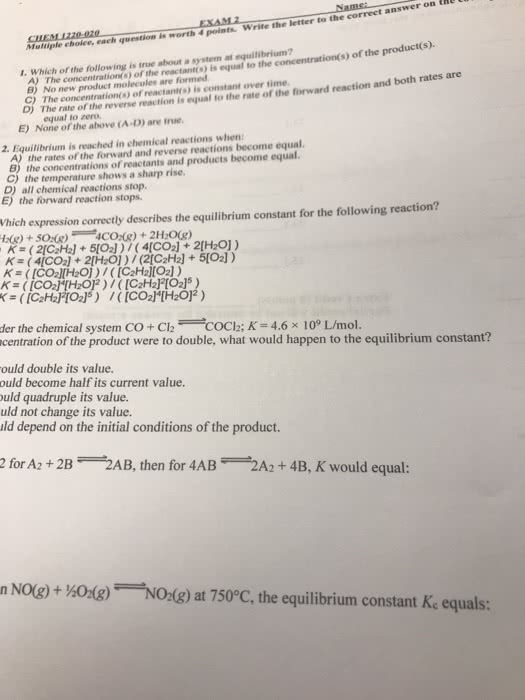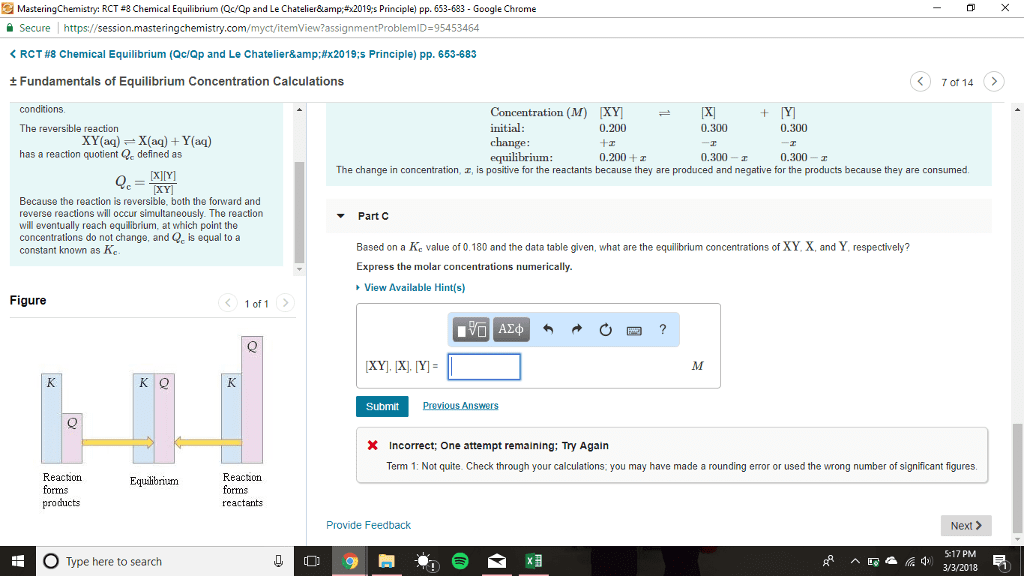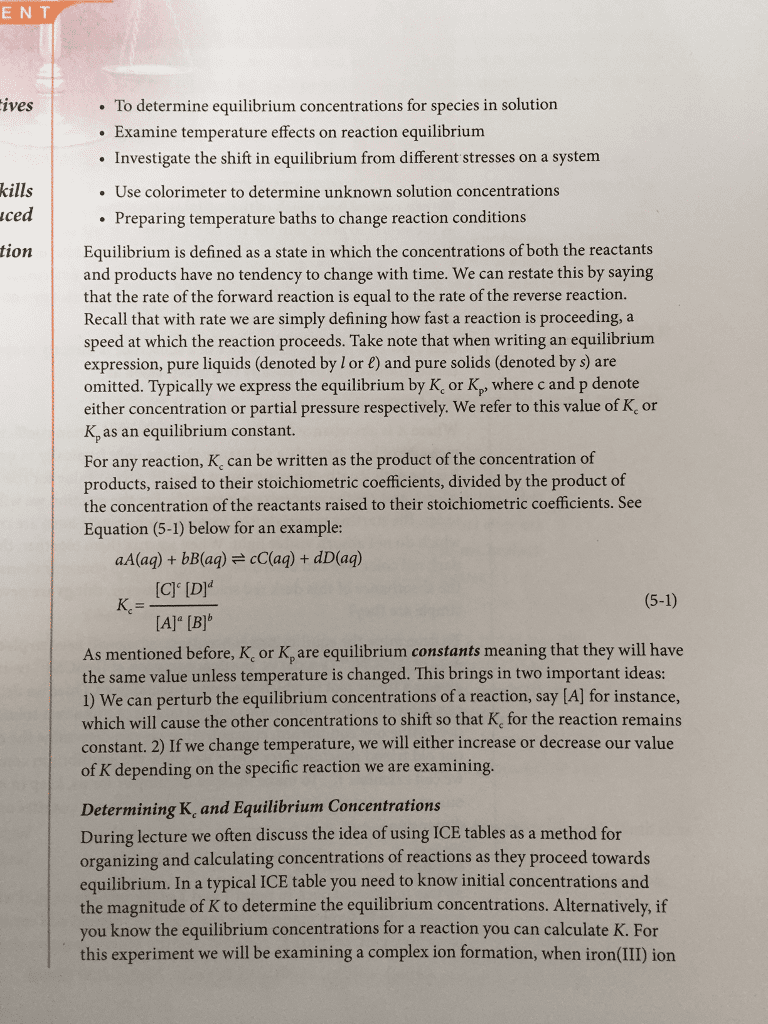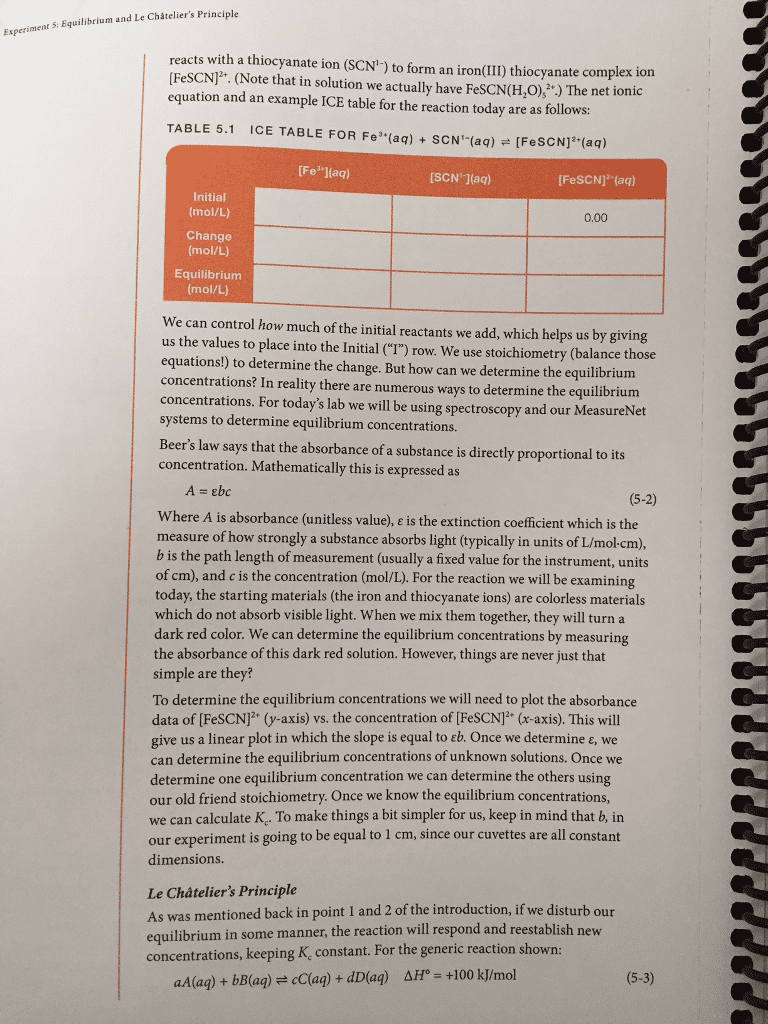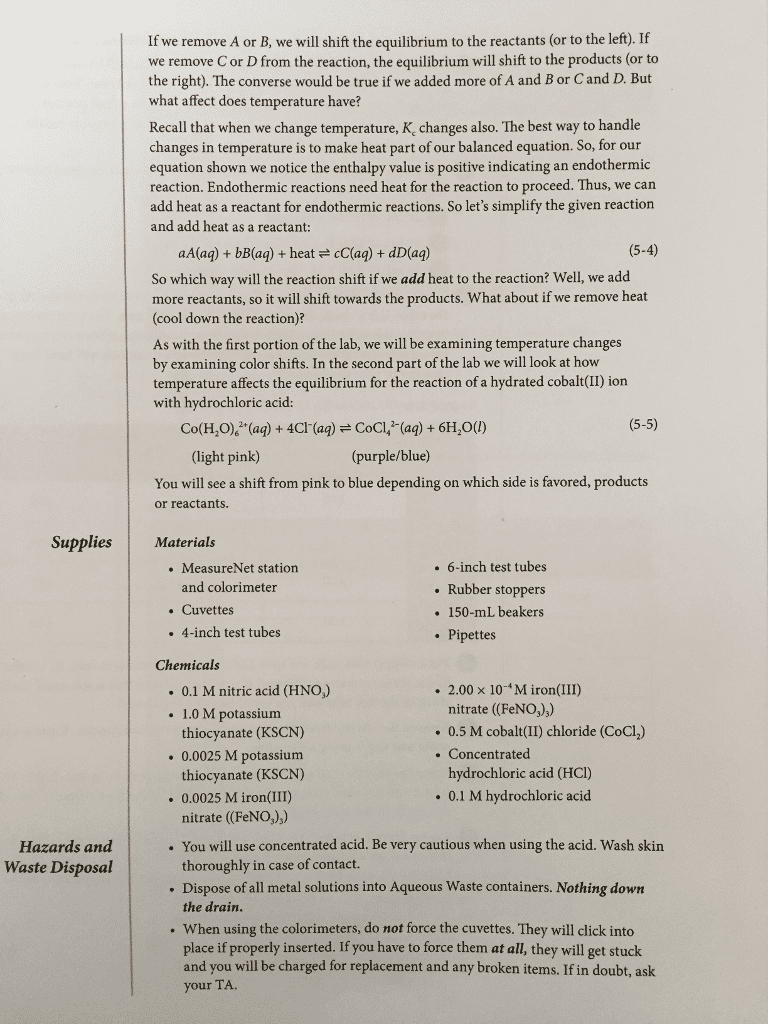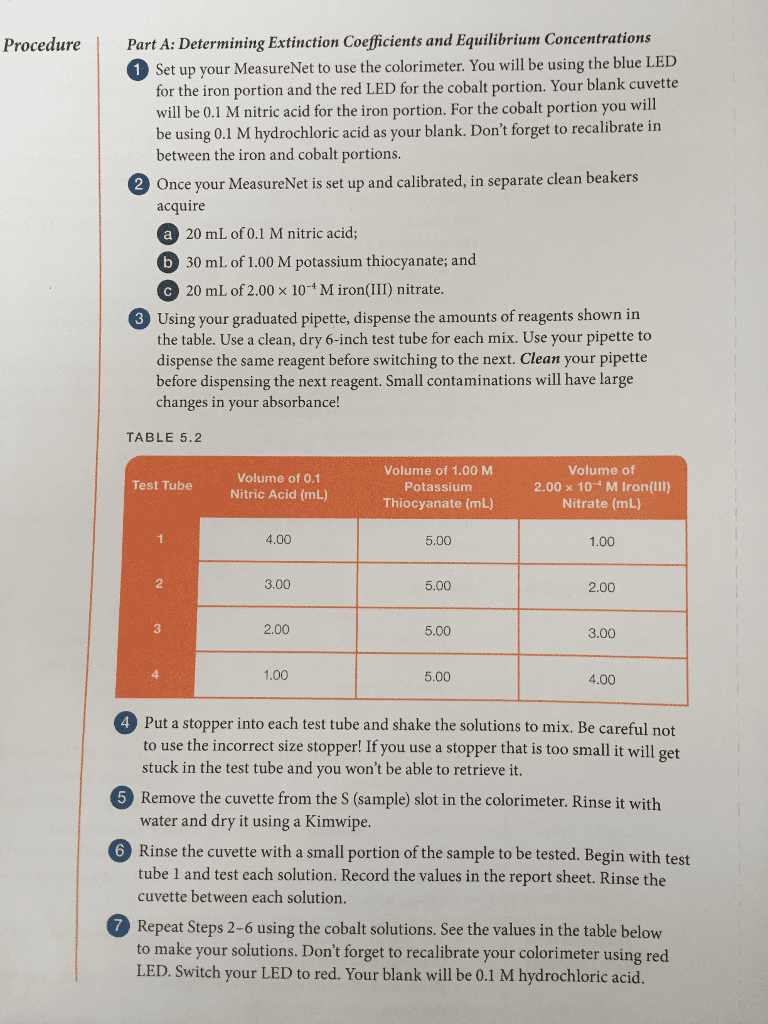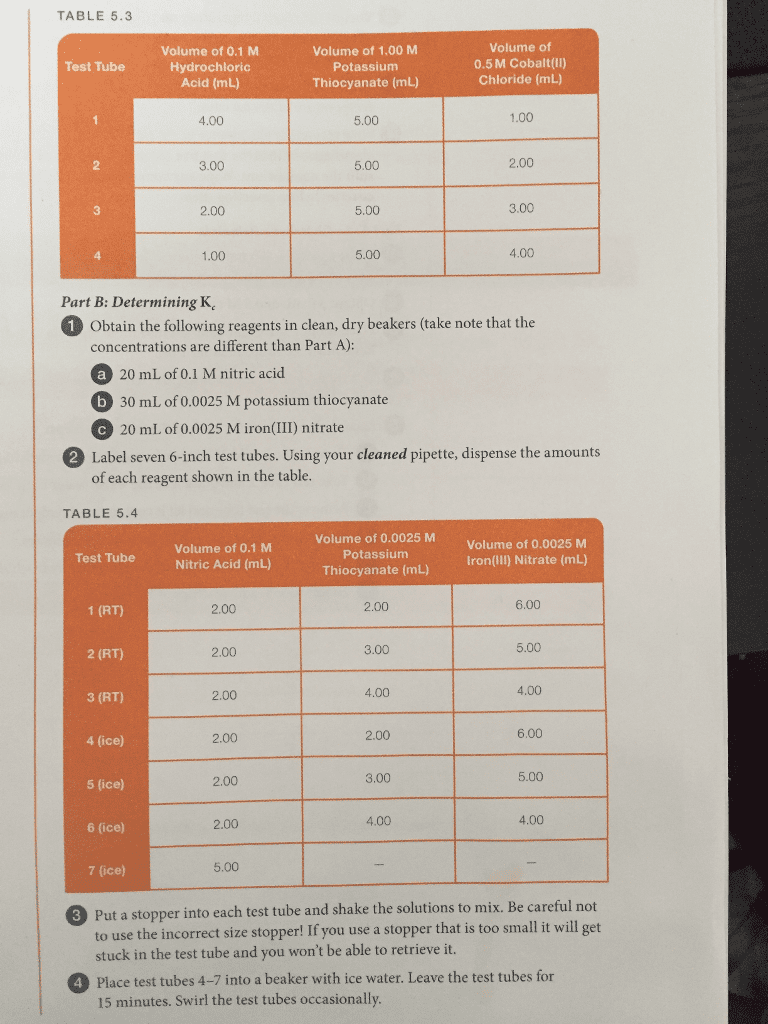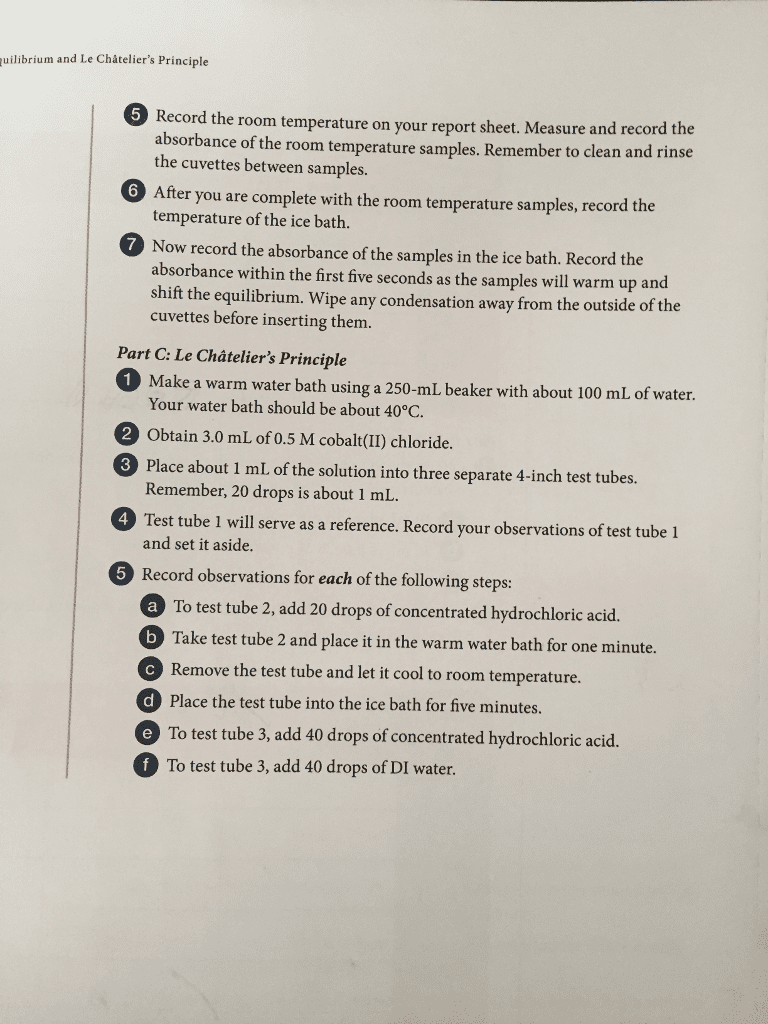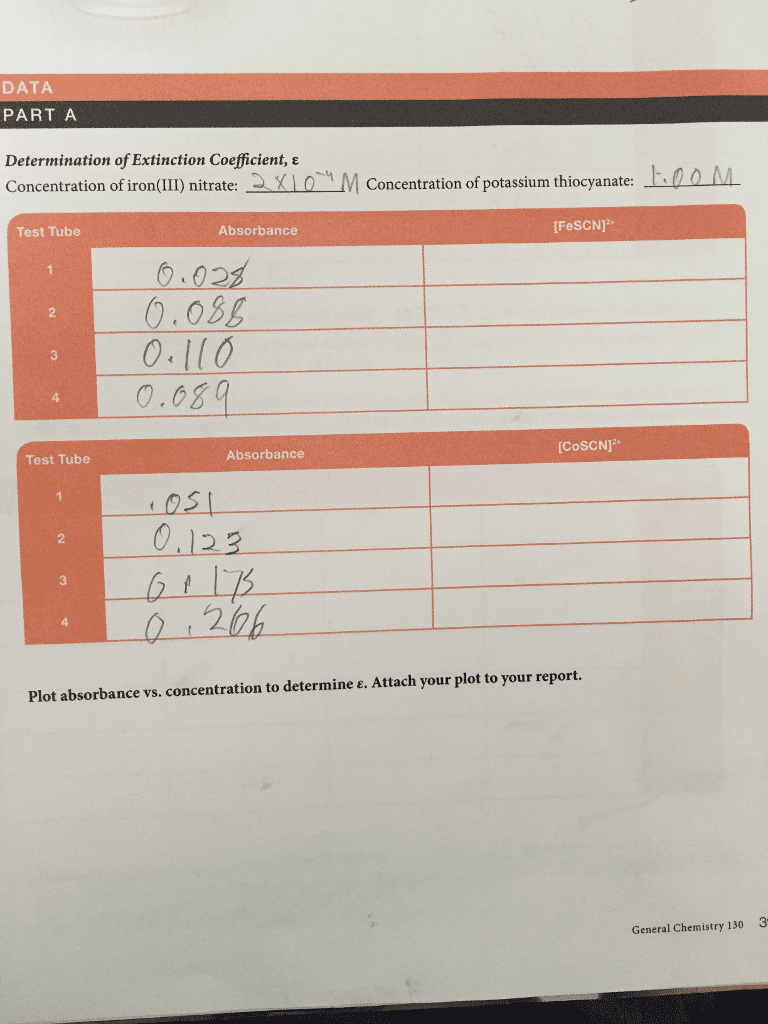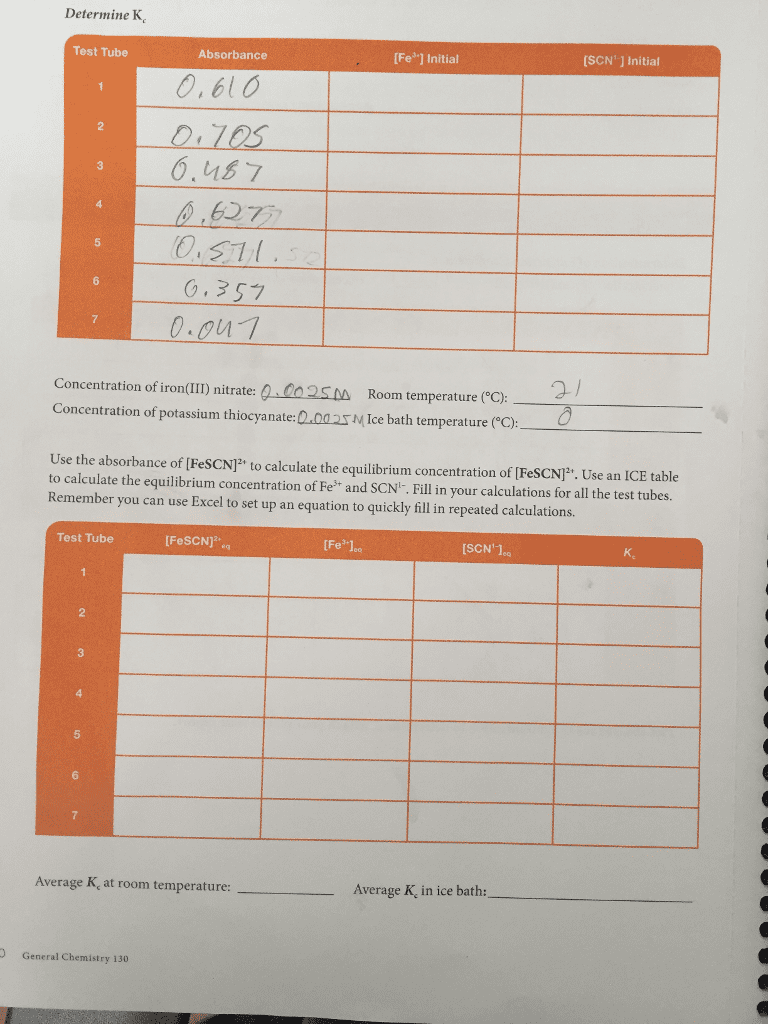Chemistry 1027A/B Study Guide - Final Guide: Amide, Aldehyde, Van Der Waals Strain
Document Summary
Reversible chemical reactions at equilibrium, system contains both reactants and products (dynamic) Equilibrium achieved when rate of forward reaction = rate of reverse. At the molecular level, both forward and reverse processes are still occurring. Equilibrium constant (k) is the mathematical relationship between pressures. Concentration of pure solids and liquids are not included in k. Numerical value of k only changes if the temperature of the system changes. Same phase = homogenous / different phase = heterogeneous. Magnitude of the equilibrium constant is an indication of the relative amount of product / reactant. If k is large more products are present, equilibrium lies to the right. If k is small more reactants are present, equilibrium lies to the left. Reaction quotient (q) indicates whether or not the system is at equilibrium and the direction in which the reaction must proceed. Q < keq: reaction must proceed in forward direction (not enough product)

